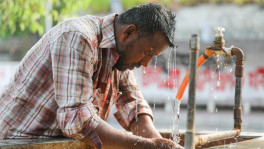Solar soon to be the most affordable electricity source for Bangladesh: Bloomberg
Renewable energy provides the cheapest option for Bangladesh to meet its growing electricity demand while reducing emissions

Bangladesh's heavy reliance on fossil-fuel thermal power plants has reduced the country's energy security, while draining its foreign currency reserves and increasing local pollution, according to a new report published by research firm BloombergNEF (BNEF).
Also, the report underscores that any additional expansion of fossil-fuel thermal power plants would pose a significant threat to both the country's energy security and affordability.
In contrast, the report suggests that renewables, with a particular emphasis on solar energy, are poised to emerge as the most cost-effective and sustainable solution for meeting Bangladesh's escalating electricity demand.
The cost of electricity generation from a new solar power plant is already competitive with those of new coal and gas power plants in Bangladesh. The levelised cost of electricity (LCOE) – the financial measure used by developers and investors – for a new utility-scale solar project in Bangladesh ranges from $97-135/MWh today, according to BNEF analysis, compared to $88-116/MWh for a combined cycle gas turbine, or CCGT, and $110-150/MWh for a coal power plant. By 2025, solar will become the cheapest option, thanks to continued technology cost reduction. By 2030, solar paired with batteries will also achieve a cheaper LCOE than new thermal power plants.
Electricity from onshore wind paired with batteries would also become cheaper than new thermal plants by the mid-2030s.
"Deploying renewables presents economic and environmental benefits for Bangladesh," said Caroline Chua, co-author of the report. "Renewables can improve the country's energy security by lowering dependence on LNG and coal imports while also creating new job opportunities. Our sensitivity analysis shows that even if fossil fuel prices decline, renewables will still be more economical than thermal power plants."
Despite renewables' cost competitiveness, Bangladesh is considering building more thermal power plants, on the assumption that such power plants can run on cleaner fuels such as hydrogen or ammonia post-2030. However, BNEF's analysis shows that retrofitting thermal power plants for hydrogen or ammonia will not be more economical than building renewables. By the early 2030s, new utility-scale solar power plants will be cheaper than even the cost of running existing thermal power plants. The same will occur for on-shore wind by the early 2040s.
"Building more thermal power plants on the assumption that they can be retrofitted for clean hydrogen or ammonia in the future, will saddle Bangladesh with significant financial risk," said Isshu Kikuma, co-author of the report. "Bangladesh is better off accelerating deployment of renewables and limiting additions of thermal power plants."
Shahriar A Chowdhury, director of the Centre for Energy Research at the United International University in Bangladesh said, "In the recent past, the growth and interest of renewable energy like solar and wind have accelerated in Bangladesh, and have gradually become more cost-effective options for electricity generation. In contrast, technologies like hydrogen, ammonia, and carbon capture, which are highlighted in the draft Integrated Energy and Power Master Plan (IEPMP), have no similar track record till now."
Therefore, proven technologies like solar and wind should be focused in any power or energy sector master plan of the country, with clearly defined significant shares in the energy mix, says the report. It appears from the draft IEPMP that the country's renewable energy potential has been ignored or underestimated. The IEPMP should highlight the needs of the present and predictable future, and outline the strategy to fulfil the energy needs of Bangladesh, while not making commitments to industries and technologies which evolve rapidly and unpredictably.


 Keep updated, follow The Business Standard's Google news channel
Keep updated, follow The Business Standard's Google news channel
















